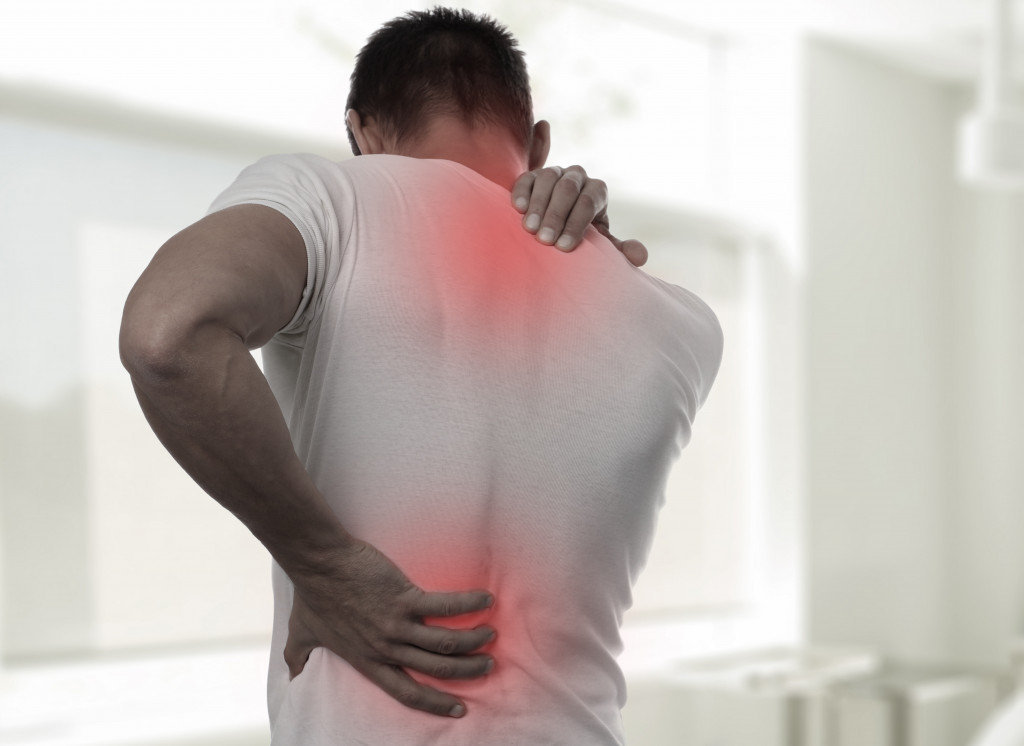Back pain is among the most common complaints doctors hear. According to research, eight out of 10 individuals will experience lower back pain at some time in their lives. Also, one out of 10 individuals experiences low back pain at any given moment.
If you often have an achy back, know that there are many possible causes. Here are five common culprits of back pain—and how to fix them:
Poor Posture
Do you spend most of your day hunched over a desk? If so, your shoulders and neck will eventually start to round forward, and your lower back will begin to arch more than it should. This puts a lot of unnecessary strain on your spine, leading to pain and inflammation.
If poor posture is to blame for your back pain, you can avoid this by sitting straight with your shoulders pulled back and your chin level with the horizon. Take regular breaks throughout the day to stretch your back muscles and walk around. When you’re sleeping, sleep on your back or side with a pillow under your knees for support.
Muscle Strains and Sprains
Muscle strains and sprains are other common causes of back pain. However, many people have a hard time differentiating between the two. Here are the distinct differences between a strain and a sprain:
- A muscle strain happens when your muscles overstretch or tear. Lifting something heavy or even coughing too hard can cause strain.
- A ligament sprain occurs when you stretch or tear the tough bands of tissue that hold your bones together at joints. Twisting or falling awkwardly can lead to a sprain.
Both strains and sprains can cause inflammation, swelling, muscle spasms, and pain in your back. To avoid muscle strains and sprains, always warm up before exercising or participating in other physical activities. And when lifting heavy objects, be sure to use proper form by keeping your spine neutral, engaging your core muscles, and using your legs to do most of the work.
Rest the area and apply ice for the first few days to treat these injuries. You can also take over-the-counter pain medication if needed. See a doctor or physical therapist for further treatment options if your pain persists.
Degenerative Disc Disease

This condition occurs when the discs in the spine break down with age and begin to bulge or rupture. This can put pressure on the nerves surrounding the discs and lead to pain, numbness, and weakness in the arms or legs. In some cases, it may also cause problems with bowel or bladder function.
One can prevent degenerative disc disease by maintaining a healthy weight, the right dietary approach, exercising regularly, and avoiding smoking. Using good form and body mechanisms can also help prevent degenerative disc disease.
Doctors can diagnose degenerative disk disease through a combination of a physical exam, imaging tests, and, sometimes, nerve studies. While there isn’t a cure for degenerative disc disease, there are treatments that can help relieve symptoms. These include physical therapy, epidural injections, and surgery.
Osteoarthritis
Osteoarthritis is arthritis caused by the breakdown of cartilage in the joints. As the cartilage wears away, bone rubs against bone, leading to pain, stiffness, and inflammation. This commonly affects the neck, low back, knees, and hips, but it can also affect other joints such as fingers and toes.
There is no cure for osteoarthritis, but treatments such as weight loss, exercise, and medication can help relieve symptoms. Surgery may also be necessary in some cases. To prevent osteoarthritis, maintain a healthy weight, exercise regularly, avoid smoking, and eat a healthy diet.
Scoliosis
Scoliosis is a condition where the spine curves to the side. This can cause the spine to rotate and compress the nerves running along it. As a result, people with scoliosis often experience pain, stiffness, and muscle fatigue. In severe cases, it may also lead to difficulty breathing.
This condition usually develops in adolescence, but it can also affect adults. To prevent scoliosis, pay attention to your posture and use proper form when lifting heavy objects. If you already have scoliosis, there are treatments that can help relieve symptoms and prevent the condition from getting worse. These include physical therapy, bracing, and surgery.
Treating scoliosis in adults usually starts with conservative measures, such as physical therapy and exercise. If these don’t work, your doctor may recommend bracing or surgery. Adult scoliosis surgery generally successfully treats the condition and relieves pain.
If you choose the non-surgical scoliosis treatment, your doctor will probably recommend a combination of physical therapy and exercise. The goal of this scoliosis treatment is to stop the progression of the curve and relieve pain. Make sure you do your research to find a reputable scoliosis specialist with great reviews and a good track record before putting your treatment in their hands.
Whatever its cause may be, back pain can range from mild discomfort to debilitating agony. There are treatments available that can help relieve pain and improve quality of life. Talk to your doctor about which options are best for you based on the underlying cause of your pain.

